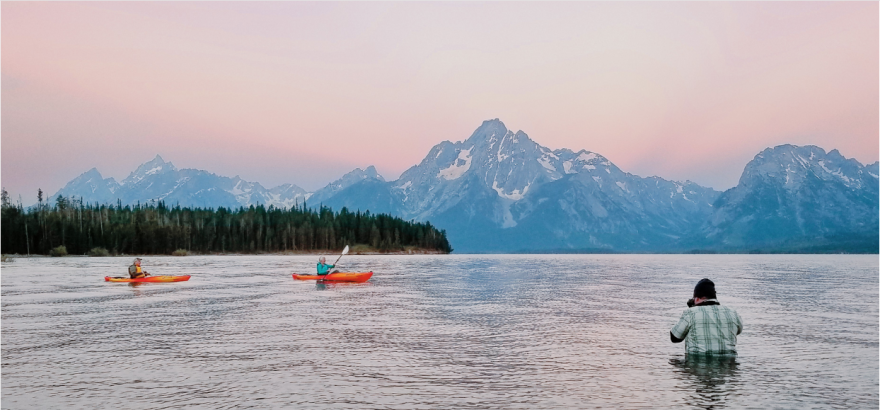Jason Lindsey likes winter.
“My wife and I happen to love winter and love snow,” he said.
Lindsey grew up in western Illinois and studied graphic design at Illinois State University. He now lives in Mahomet on the banks of the Sangamon River, working professionally as a photographer and videographer.
Lindsey loves spring, too, but struggles with March, that in-between time straddling the two seasons. The couple started making maple syrup in their backyard during the pandemic as a way of embracing the winter-spring hump.
“The actual tapping process was much simpler than we expected,” Lindsey said on WGLT’s Sound Ideas.
Once sap is collected, it is boiled into a concentrate — at a ratio of about 40 gallons of sap to 1 gallon of syrup. But it’s fickle business. As those who’ve made candy can attest, there’s a point of no return, Lindsey said, when liquid sugar becomes a burnt, globby mess.
“That part is probably the most complex, going from concentrated sap after you’ve been boiling it for a while to the actual maple syrup,” he said.
It's a hobby that takes patience. And you've got to get the timing just right.
“The most ideal conditions are when it gets below freezing at night and above freezing during the day — and it’s a sunny day,” he said.
The precarity of the practice revealed itself a few years ago when Lindsey’s schedule took him away from home on the one weekend it would have been possible to collect sap from the maple trees in his backyard. That’s when he made It’s Time, a poetic short film on sugar making.
“That was the first time I really realized the changing climate had an impact on something as simple as making syrup in our own backyard.”
Lindsey’s work has taken him to some of the globe’s most magnificent landscapes. Projects like It’s Time connect viewers to what some might say is the hidden beauty of Central Illinois — something Lindsey learned from landscape photographer Robert Shaw at ISU.
“He introduced me to the landscapes of Illinois and that’s where I started developing my deep appreciation for them,” Lindsey said. “When I started traveling extensively for work, I started finding Illinois boring for a little while. But then I pretty quickly came back to appreciating it — especially the seasons.”

Like syrup making itself, co-directors Lindsey and Scott Krahn’s four-minute film was an exercise in patience. It took three years to shoot, edit and produce It’s Time, with micro and macro images of Lindsey's wife, Anna Keck, sugar making overlaid with narration by voiceover artist David Pettit and music by The Blackbird 3 — the ladder a blend of Native American flute and percussion layered with a synth drone.
It's a lot to pack into a few minutes, a decision Lindsey said was both artistic and pragmatic.
“The timing was really about making something I could take on and accomplish," he said. "This was a personal project with no funding or no outside sources of support, so I really wanted to make sure I could complete the project.”

Lindsey did better than finish. It's Time recently won best in show at the Bensonville Short Film Festival and earned a spot in numerous environmental film festivals. Like March, it is neither purely art film nor purely a climate change documentary. The film is dedicated to the indigenous Anishinaabe, Haudenosaunee and Wabanaki people who invented sugar making.
“I was sitting out in the woods under the maple trees thinking about the fact that I couldn’t tap trees that spring because of climate change, and how much it’s changed over the years,” Lindsey said.
He was reading Robin Wall Kimmerer’s book Braiding Sweetgrass at the same time.
“There was a story about how when maple syrup first started flowing from trees it flowed out directly as syrup. It was not sap. It was concentrated,” he said.
In the parable, this fostered laziness. A trickster noticed and added water to the trees so people had to work for maple syrup.
“That really connected me to the same kind of thinking I was having,” Lindsey said. “We have to work to protect things and work to appreciate things. For me, it was profound to read a story like that, that then connected to how I was seeing the world and realizing, again, many times in my life, how the thoughts that I had—people had been having those same kinds of thoughts for centuries.”
It's Time is viewable on YouTube and at itstimefilm.com.




